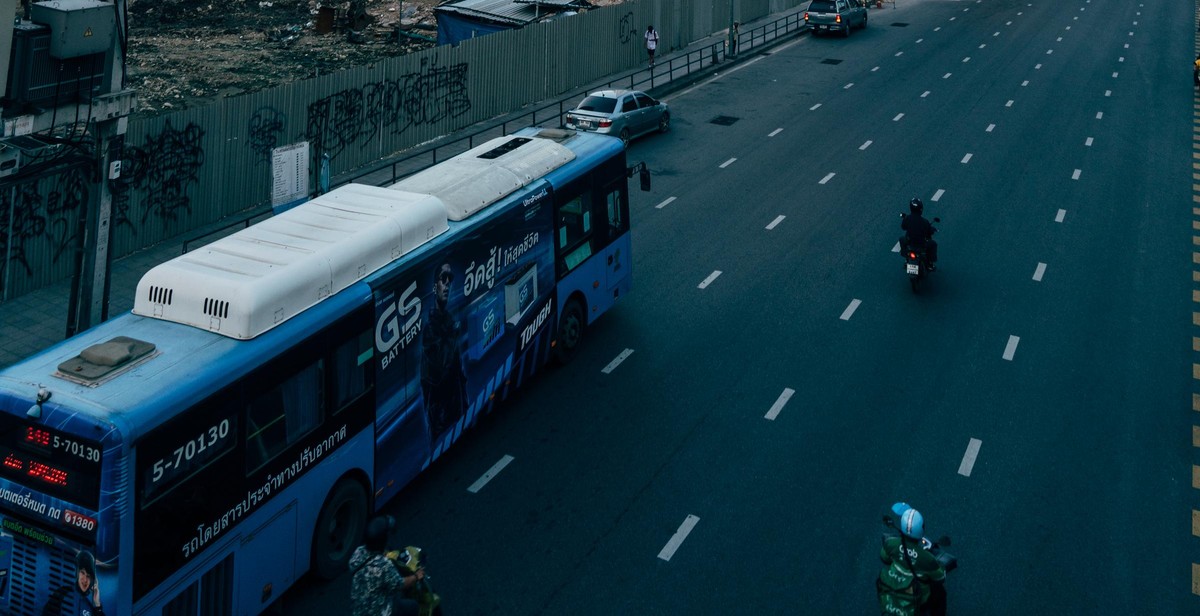How to Navigate Central American Public Transportation: Getting Around Safely and Efficiently
Central America is a beautiful and diverse region, with many countries offering stunning natural landscapes, rich cultures, and vibrant cities. However, getting around can be a challenge, especially if you’re not familiar with the local transportation systems. Public transportation in Central America can be crowded, confusing, and even dangerous at times, but with some preparation and knowledge, you can navigate it safely and efficiently.
Why use public transportation in Central America?
Using public transportation in Central America is a great way to save money, experience local culture, and reduce your environmental impact. Buses and trains are the most common forms of public transportation in the region, and they offer a range of options from local buses to long-distance coaches. Taxis and ride-sharing services are also available in some areas, but they can be more expensive.
What to consider before using public transportation
Before you start using public transportation in Central America, there are some important things to consider. First, research the local transportation options and routes to familiarize yourself with the system. It’s also a good idea to learn some key phrases in Spanish, as this is the most commonly spoken language in the region. Finally, make sure you’re aware of the safety risks and take precautions to protect yourself and your belongings.
Tips for navigating Central American public transportation
- Arrive early to avoid crowds and ensure you get a seat
- Carry small bills and change for fares
- Keep your valuables close and secure
- Be aware of your surroundings and trust your instincts
- Ask locals for advice and recommendations
By following these tips and taking some time to prepare, you can navigate Central American public transportation safely and efficiently, and enjoy all that this beautiful region has to offer.

Researching Your Options
Once you have a better understanding of your destination, it’s time to research your transportation options. Central America is known for its vibrant public transportation system, which includes buses, taxis, and even boats. However, navigating these options can be tricky, especially if you’re unfamiliar with the area. Here are some tips to help you research your transportation options:
1. Check Online Resources
Before you arrive at your destination, check online resources such as travel blogs and forums to gather information about public transportation options. These resources can provide valuable insight into how to navigate the system, which routes to take, and what to expect in terms of cost and safety.
2. Consult with Locals
Once you arrive, don’t be afraid to consult with locals about their preferred transportation options. They can provide insider tips and tricks that you won’t find online. Additionally, many locals are happy to help tourists navigate the public transportation system.
3. Consider Safety
When researching your transportation options, safety should be a top priority. Make sure to research the safety record of the transportation options you’re considering, and avoid any that have a history of accidents or safety concerns. Additionally, be aware of your surroundings and keep an eye on your belongings while using public transportation.
4. Compare Costs
Cost is another important factor to consider when researching your transportation options. While public transportation is generally affordable in Central America, costs can vary depending on the mode of transportation and the distance traveled. Make sure to compare costs between different options to find the most affordable and efficient way to get around.
5. Plan Ahead
Finally, it’s important to plan ahead when using public transportation in Central America. Many routes have limited schedules, so make sure to plan your travel time accordingly. Additionally, be prepared for delays and unexpected changes in schedules, especially during peak travel times.
| Tip: | Consider downloading a transportation app such as Moovit or Google Maps to help you navigate public transportation routes and schedules. |
|---|

Navigating the System
Central American countries have their own unique public transportation systems, and navigating them can be a bit overwhelming for first-time travelers. However, with a little bit of preparation and some insider tips, you can easily get around safely and efficiently.
Buying Tickets and Paying Fares
The process of buying tickets and paying fares can vary depending on the country and the mode of transportation. In some cases, you may need to purchase tickets in advance, while in others, you can buy them directly from the driver or conductor.
It’s important to have local currency on hand, as many drivers and conductors will not accept foreign currency. You should also be prepared to negotiate fares, especially if you’re taking a taxi or a shuttle.
Navigating Routes and Schedules
Central American public transportation can be unpredictable, so it’s important to plan ahead and have a general idea of the routes and schedules. You can often find this information online or at local transportation hubs.
If you’re not sure about a route or schedule, don’t be afraid to ask for help. Locals are often happy to assist travelers, and you may even make some new friends along the way.
Dealing with Language Barriers
Language barriers can be a challenge when navigating Central American public transportation, especially if you don’t speak Spanish. However, there are a few things you can do to make communication easier.
- Learn some basic Spanish phrases, such as “¿Cuánto cuesta?” (How much does it cost?) and “¿Dónde está la parada de autobús?” (Where is the bus stop?)
- Use a translation app on your phone or carry a phrasebook with you
- Be patient and try to communicate with gestures and body language if necessary
Remember, the key to navigating Central American public transportation is to be flexible, patient, and open to new experiences. With a little bit of preparation and a willingness to adapt, you can easily get around and explore all that these beautiful countries have to offer.
Staying Safe and Secure
Traveling on public transportation in Central America can be a fun and exciting experience, but it is important to take precautions to ensure your safety and security. Here are some tips to help you stay safe:
Avoiding Pickpockets and Scams
Pickpocketing is a common problem in Central America, especially in crowded areas such as bus terminals and markets. To avoid being a victim, keep your valuables close to you and avoid carrying large amounts of cash. You can also use a money belt or a hidden pocket to keep your money and important documents safe.
Scams are also a common problem in Central America, and tourists are often targeted. Be wary of people who approach you offering tours or services, and always negotiate prices beforehand. If something seems too good to be true, it probably is.
Traveling at Night
Traveling at night can be risky, especially in areas that are known for crime. If you must travel at night, it is best to do so in a group and to take a taxi or a reputable bus service. Avoid walking alone, and always stay in well-lit areas.
Dealing with Emergencies
In case of an emergency, it is important to stay calm and to know how to get help. Keep a list of emergency numbers with you, including the local police and ambulance services. If you are traveling with a group, make sure everyone knows what to do in case of an emergency.
It is also a good idea to have travel insurance that covers medical emergencies and other unexpected events. Make sure you understand your policy and know how to contact your insurance provider in case of an emergency.
| Emergency Numbers | Central American Country |
|---|---|
| 911 | Costa Rica, El Salvador, Guatemala, Honduras, Nicaragua, Panama |
| 118 | Belize |
By taking these precautions, you can greatly reduce the risk of encountering problems while traveling on public transportation in Central America. Remember to always be aware of your surroundings and to trust your instincts.
Conclusion
Traveling through Central America can be an incredible adventure, but it can also be a bit daunting, especially if you’re not familiar with the local transportation systems. However, with a bit of preparation and some common sense, you can navigate the region’s public transportation safely and efficiently.
Remember to always prioritize safety
Whether you’re traveling on a bus, a train, or a boat, safety should always be your top priority. Be aware of your surroundings at all times, keep an eye on your belongings, and avoid carrying large amounts of cash or valuable items with you.
Be flexible with your travel plans
When it comes to public transportation in Central America, schedules can be unpredictable. Be prepared to wait for buses or boats that may be running late, and try to be flexible with your travel plans. Consider bringing a book or some other form of entertainment to pass the time.
Ask for help if you need it
If you’re feeling lost or unsure about where to go, don’t be afraid to ask for help. Locals are often more than happy to assist travelers, and many transportation providers have staff members who speak English and can help you navigate the system.
Enjoy the journey
Finally, remember to enjoy the journey. Central America is a beautiful and fascinating region, and traveling through it by public transportation can be a great way to experience the local culture and meet new people. So sit back, relax, and enjoy the ride!
